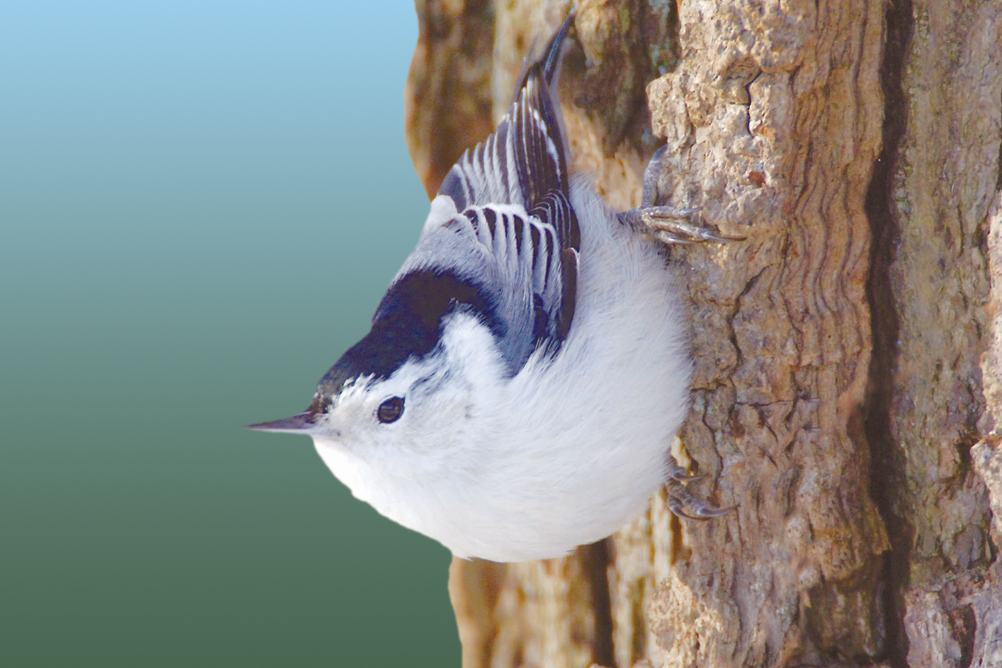This little bird eats some of our least-favorite insects White-breasted NUTHATCH

By Jim Thornton
Ohio certified volunteer naturalist
When you see a bird walking down a large branch or tree trunk head first, you can bet it is a nuthatch.
It is for this reason that they are often captured in photographs in the same pose.
The white-breasted nuthatch (Sitta carolinensis) is a year-round visitor to our backyards, feeders and most of the country.
Its cousin, the slightly smaller red-breasted nuthatch, is only a seasonal visitor and is easily distinguished by its rusty red underside and black line across its face.
The white-breasted nuthatch averages 5.5 inches in length.
Its large head seems to come straight from its short-tailed body, having almost no visible neck.
Its long, pointed beak points slightly upward.
As the name implies, it has a bright white breast and face with black eyes.
The head and nape are capped in black (sometimes dark grey in females).
The body is blue grey on the top and rusty red on the lower belly and under the tail.
The white-breasted nuthatch is usually seen in deciduous forests walking down tree trunks. As it walks down the tree, it will bend its head up almost level to the ground to look around for predators.
Nuthatches wedge food in bark either to eat later or to hold while they use their sharp beaks to break open seeds and nuts. This “hatching” behavior is what gives the birds their name.
White-breasted nuthatch pairs stay together through the winter, hardly ever out of a “yank, yank, yank” call distance from each other.
They also like to flock with other small birds such as tufted titmice and chickadees.
In the spring, the male becomes more attentive to the female, feeding her by placing food in her beak or wedging food in the tree bark near her and beginning a softer version of his “wha, wha, wha” song to her.
The pair (mostly the female) will build a nest in a tree cavity or old woodpecker hole. The cup-shaped nest is made mostly of bark and grass with earth to hold it together.
The single brood consists of five to nine eggs. The typically creamy white to pinkish eggs are well marked with reddish brown to purple spots.
After the female incubates the eggs for 13 to 14 days, the chicks will be fed by both parents until they fledge after 26 days.
Like many cavity nesters, they may be attracted to a bird box.
White-breasted nuthatches are omnivorous but eat mainly insects and larvae in the summer and nuts and seeds in the winter.
At feeders, this acrobatic bird eats nuts, sunflower seeds and suet.
Among the insects they eat are some of our least favorite, including stinkbugs, gypsy moths, tent caterpillars and pine weevils.
What a great reason to have them around.
To learn more about this bird, visit go.osu.edu/nuthatch.
 43
43
